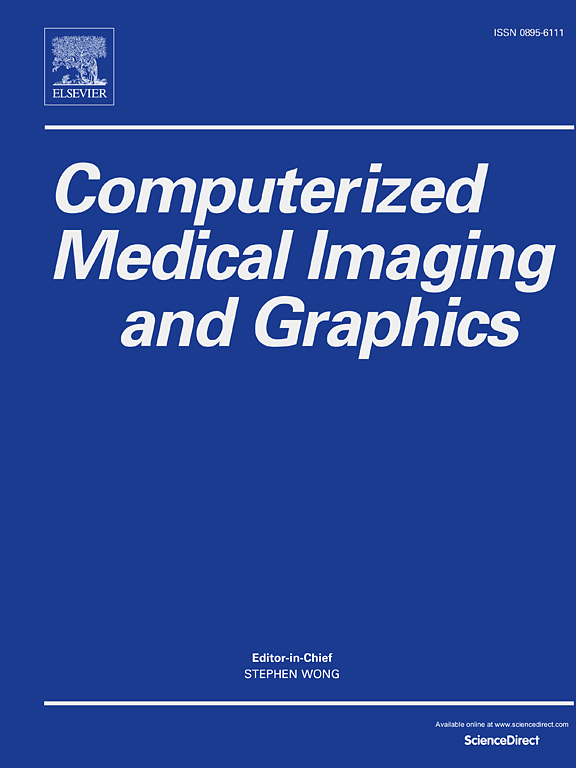TQGDNet: Coronary artery calcium deposit detection on computed tomography
IF 5.4
2区 医学
Q1 ENGINEERING, BIOMEDICAL
Computerized Medical Imaging and Graphics
Pub Date : 2025-02-06
DOI:10.1016/j.compmedimag.2025.102503
引用次数: 0
Abstract
Coronary artery disease (CAD) continues to be a leading global cause of cardiovascular related mortality. The scoring of coronary artery calcium (CAC) using computer tomography (CT) images is a diagnostic instrument for evaluating the risk of asymptomatic individuals prone to atherosclerotic cardiovascular disease. State-of-the-art automated CAC scoring methods rely on large annotated datasets to train convolutional neural network (CNN) models. However, these methods do not integrate features across different levels and layers of the CNN, particularly in the lower layers where important information regarding small calcium regions are present. In this study, we propose a new CNN model specifically designed to effectively capture features associated with small regions and their surrounding areas in low-contrast CT images. Our model integrates a specifically designed low-contrast detection module and two fusion modules focusing on the lower layers of the network to connect more deeper and wider neurons (or nodes) across multiple adjacent levels. Our first module, called ThrConvs, includes three convolution blocks tailored to detecting objects in images characterized by low contrast. Following this, two fusion modules are introduced: (i) Queen-fusion (Qf), which introduces a cross-scale feature method to fuse features from multiple adjacent levels and layers and, (ii) lower-layer Gather-and-Distribute (GD) module, which focuses on learning comprehensive features associated with small-sized calcium deposits and their surroundings. We demonstrate superior performance of our model using the public OrCaScore dataset, encompassing 269 calcium deposits, surpassing the capabilities of previous state-of-the-art works. We demonstrate the enhanced performance of our approach, achieving a notable 2.3–3.6 % improvement in mean Pixel Accuracy (mPA) on both the private Concord dataset and the public OrCaScore dataset, surpassing the capabilities of established detection methods.
求助全文
约1分钟内获得全文
求助全文
来源期刊
CiteScore
10.70
自引率
3.50%
发文量
71
审稿时长
26 days
期刊介绍:
The purpose of the journal Computerized Medical Imaging and Graphics is to act as a source for the exchange of research results concerning algorithmic advances, development, and application of digital imaging in disease detection, diagnosis, intervention, prevention, precision medicine, and population health. Included in the journal will be articles on novel computerized imaging or visualization techniques, including artificial intelligence and machine learning, augmented reality for surgical planning and guidance, big biomedical data visualization, computer-aided diagnosis, computerized-robotic surgery, image-guided therapy, imaging scanning and reconstruction, mobile and tele-imaging, radiomics, and imaging integration and modeling with other information relevant to digital health. The types of biomedical imaging include: magnetic resonance, computed tomography, ultrasound, nuclear medicine, X-ray, microwave, optical and multi-photon microscopy, video and sensory imaging, and the convergence of biomedical images with other non-imaging datasets.

 求助内容:
求助内容: 应助结果提醒方式:
应助结果提醒方式:


